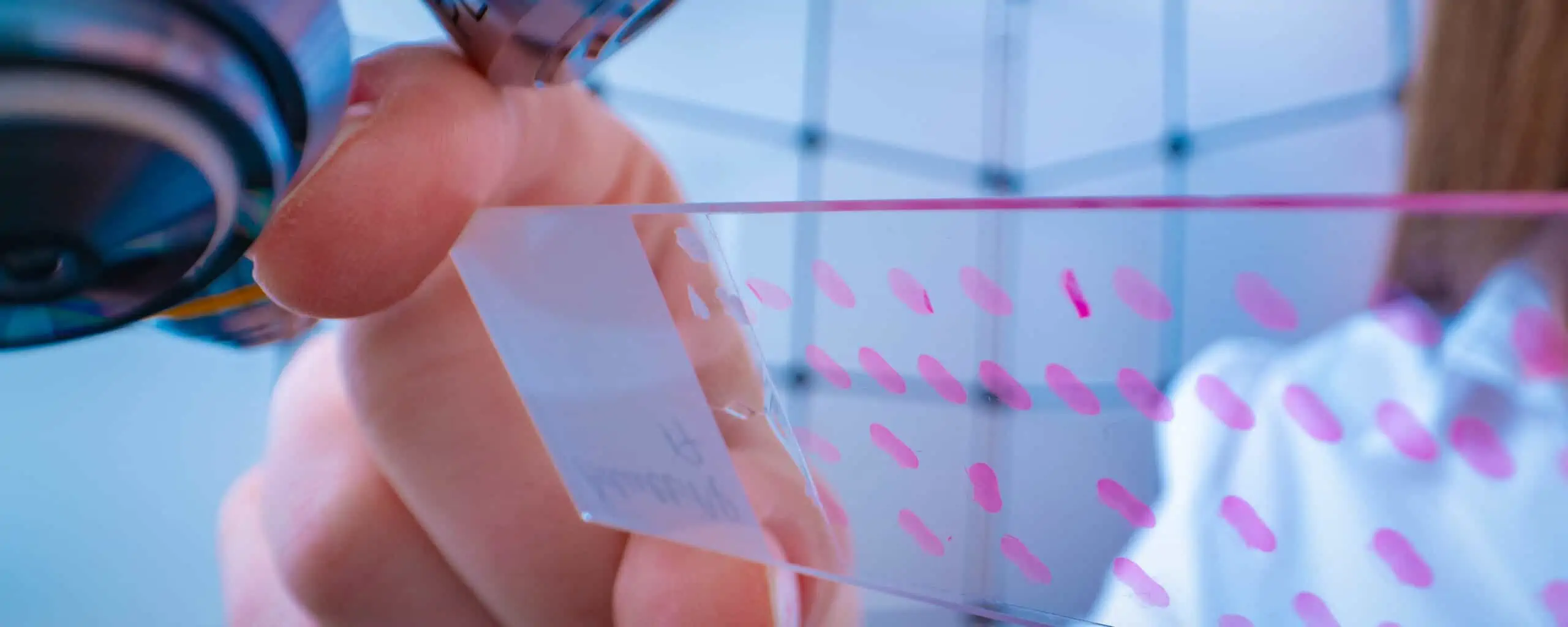It is likely that you had a core biopsy or fine needle aspiration (FNA) before you were referred to Dr Lancashire.
A core biopsy gives a surgeon some of the important information regarding what type of breast cancer you may have. A biopsy is only a small sample of tissue and will not give you all the detailed information you would get after an operation.
The following information is a broad overview of the breast cancer types, and the information you will get about a breast cancer from the pathologist.
Types of Breast Cancer
There are many different types of breast cancer. This list is not meant to be exhaustive. There are several special ‘sub-types’ of breast cancers which Dr Lancashire can explain if it is pertinent to your management.
Ductal carcinoma in situ (DCIS)
This is a non-invasive breast cancer. That means that it has not spread outside of the ducts into the surrounding breast tissues. If left untreated it is likely to develop into invasive breast cancer.
Lobular carcinoma in situ (LCIS)
Despite its name, LCIS is not a true breast cancer. It means there are abnormal cells contained within the breast lobules. It is not able to spread to other parts of the breast or body. LCIS does not require treatment on its own but is a risk factor for developing a breast cancer in the future. There is a subtype of LCIS called pleomorphic LCIS. Its significance is still the subject of great debate and controversy amongst medical specialists.
Invasive breast cancer
There are many types of these. Invasive ductal carcinoma and invasive lobular carcinoma are the two most common. There are a number of different sub-types of invasive cancer.
Paget's Disease of the nipple
A rarer form of breast cancer (<5%). Cancerous cells are in and around the nipple, and may spread onto the areola.
Inflammatory breast cancer
A very rare (<2%) and aggressive form of breast cancer. It causes the lymphatic vessels in the skin to become blocked which makes the breast look red and swollen.
In addition to the type of breast cancer, a pathologist will report on several other important pieces of information about a breast cancer. Dr Lancashire will take you through your pathology report in detail as soon as it returns from the pathologist. He will explain what it means for your treatment and what you can expect in the future.

Other information about breast cancer
Location
Where in the breast the cancer is and its relationship to the chest wall and skin.
Size
How big the breast cancer is.
Grade
This is how the cancer cells appear when compared to normal breast cells and how fast they are growing. Breast cancers are graded from 1 to 3:
- Grade 1 (Low grade / well differentiated) – slow growing and less aggressive
- Grade 2 (Intermediate grade / moderately differentiated) – grow faster than low grade cancer cells
- Grade 3 (High grade / poorly differentiated) – grow quickly and more likely to be aggressive
Margins
This gives information on whether the tumour has been removed completely and if there is a rim of healthy tissue around it. If margins are ‘involved’ or deemed to be ‘too close’, a surgeon may recommend subsequent surgery.
Lymph node involvement
This tells you if there are cancerous cells in the lymph nodes in the armpit. It may determine if you need more surgery or other treatment (chemotherapy, for example).
Hormone receptors
Some breast cancers have hormone receptors on their surface. When these receptors are stimulated, it can cause the cancer cells to grow. The two types of receptors that are tested for are oestrogen receptors (ER) and progesterone receptors (PR). People that are ER positive may be recommended endocrine therapy as part of their treatment.
HER2 status
Some breast cancers have a certain type of protein on their surface (a receptor called HER2) that allows chemicals to bind causing the cancer to divide (and grow). People with breast cancers that are HER2 positive may be recommended chemotherapy and a medication called Herceptin®.


